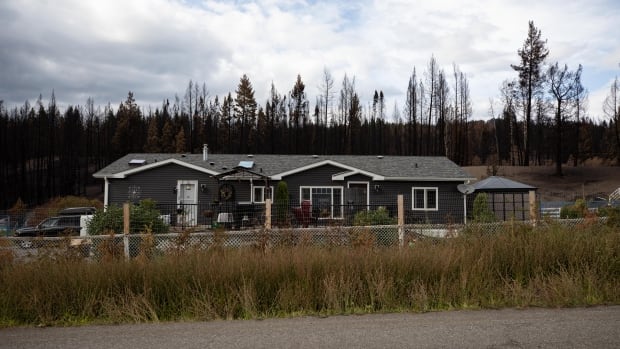B.C. has recorded 68 wildfires this month, and residents are being urged to make their homes and communities more fire-resistant to avoid the types of tragedies seen during the 2021 Wildfire Season.
More than 800,000 hectares of the province burned last year, including much of Lytton where two people died. While it’s too early to tell wether the province will see similar conditions, the 2022 season began April 1, and as of Monday, there are nine active fires in the province. None of those pose threats to public safety.
But fire officials warn that homes adjacent to forests can become particularly at risk in the coming months, especially in areas that were hit by last years heat dome that killed nearly 600 people.
“The truth is the climate is changing. It’s getting drier and drier,” said Lt. Kim Saulnier, acting captain of North Vancouver’s Fire and Rescue Services. “Last summer, we saw that intense heat dome in this area, and that was combined with a looper moth infestation … so that even made the forest even more vulnerable.”
In North Vancouver, in particular, there are 6,800 properties considered to be in fire hazard areas given their proximity to forested areas.
“The idea right now is to prepare your home, even if there doesn’t seem to be an immediate risk,” said Saulnier. “By the time it gets here, we want homes to be ready. And if the fire doesn’t happen this year, next year or whenever, you’ve still done that work.”
‘FireSmart’ your home
Saulnier says one of the key ways residents can make their homes more fire resistant is by using non-combustible roofing. Alternative fire-resistant roofing materials include asphalt, clay and composite rubber tiles, according to FireSmart B.C.
Residents are advised to clear gutters, and remove materials such as leaves and branches from their roof in order to reduce risk.
FireSmart B.C. also recommends maintaining a 1.5-metre, non-combustible zone around your entire home. This means having a surface of soil, rock or stone, with no plants, debris or other flammable materials.

Fire-resistant gardens
FireSmart B.C. has also expanded a landscaping program aimed at making lawns and gardens more resilient to fires. More than 30 garden centres across the province are participating, where residents can purchase fire resilient plants which accumulate minimal dead vegetation.
Minter Country Garden in Chilliwack, B.C. is among the participants. Master gardener Brian Minter says investing in drought- and heat-tolerant plants is key to minimizing the combustibility of your lawn and garden.
“It’s a holistic program of looking at how we can reconfigure and rethink the landscapes around our home in a new environment of dangerous fires,” he said.
WATCH | Brian Minter shares tips on how to prepare your garden for the wildfire season:
B.C. master gardener Brian Minter shows you which plants to grow — and which to avoid — to reduce wildfire risk 1:56
FireSmart offers a comprehensive list of plants that are encouraged for use to reduce wildfire risk, including the whole family of Japanese maples, barberries, fire roses, and flowering shrubs.
Plants to avoid over the coming months include cedars, junipers and tall grasses.
Minter says events like the heat dome are a reminder that even homes that aren’t adjacent to forests should practise FireSmart landscaping.
“When we get a heat dome that affected so many plants — a lot of plants died — and those plants were near a lot of peoples homes,” said Minter. “In that heat, a lot of [those plants] are combustible.”



